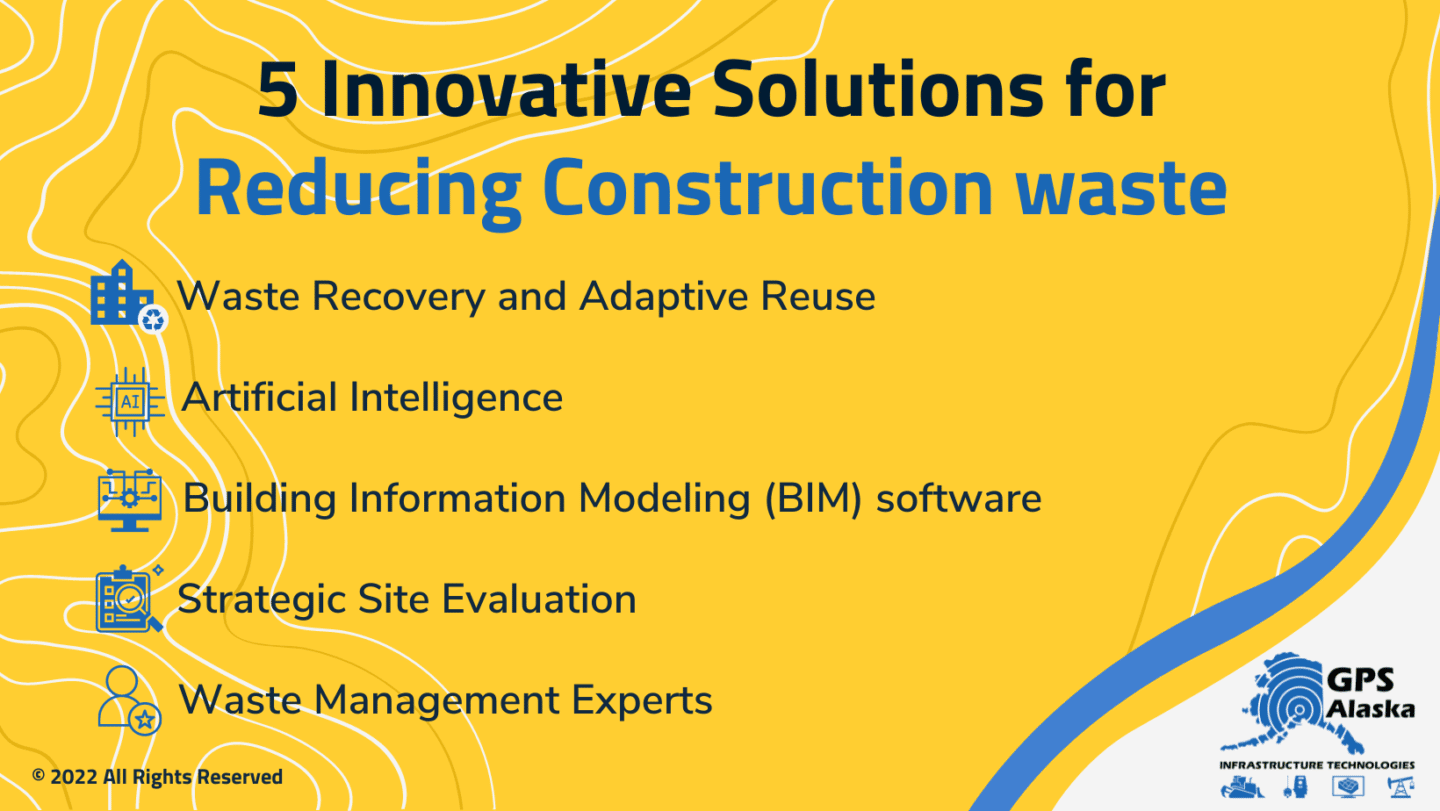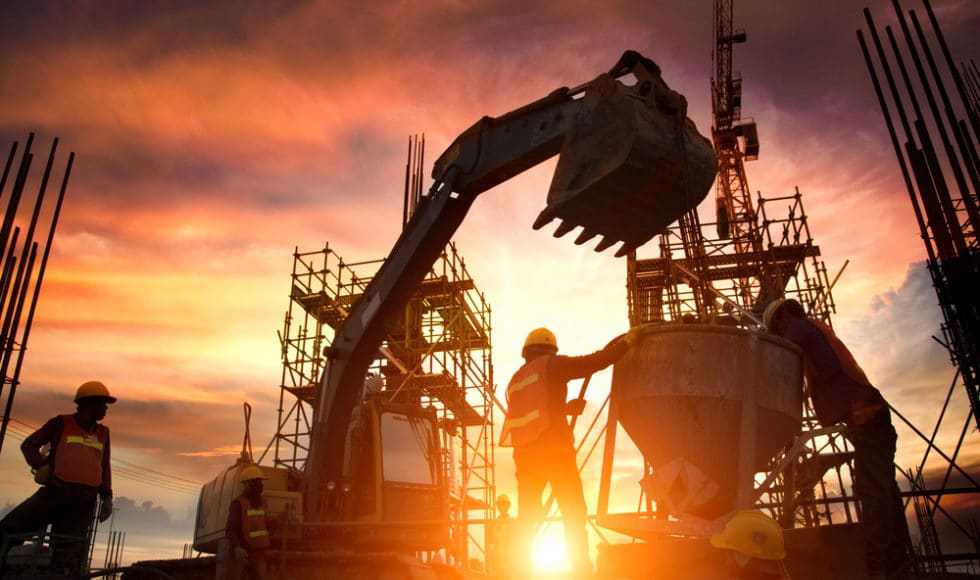As more people discover the beauty that Alaska has to offer, from the nearby wilderness areas to the peace and solitude of many smaller communities, the people who choose to move to Alaska all have one thing in common – they’re going to need somewhere to call home.
According to a study performed by the Weldon Cooper Center for Public Service at the University of Virginia, the population of Alaska is expected to increase by 9.1 percent between 2020 and 2024. With this projection in mind, it’s easy to understand that more people will need more infrastructure. This means that they’ll need office spaces, new roads, restaurants, community centers, and of course a place to call home.
Alaska is growing. As such, the state is going to need plenty of additional construction in order to satisfy the needs of a growing population. However, as construction sites account for nearly one-third of all U.S. waste created each year, it becomes necessary to cut unnecessary waste, especially in such a beautiful and pristine state.
In the following, we’ll detail five innovative ways you can begin cutting waste in construction.
Want to consult an expert about cutting waste? Contact GPS Alaska today.
1. Waste Recovery and Adaptive Reuse

With continuously increasing energy prices, both construction and demolition waste, and waste from excavation efforts, are beginning to be recognized as valuable and recoverable resources – as are existing buildings and older building sites.
If you think about it, much of the waste from demolition or construction can be reused. And industrial recycling equipment manufacturers are beginning to take notice by building newer, more sophisticated waste sorting systems for recycling industrial waste from construction sites
Additionally, adaptive reuse of buildings, sites, and building materials has also become an attractive option to reduce waste debris along with maximizing productivity. This is the process of accessing an older building (or building site) and reusing it and its materials for a modern purpose. And this method also offers a unique appeal for design.
Many older buildings were constructed during time periods that used architectural elements that many of today’s modern buildings lack. And this can be a distinct and attractive feature for new tenants or businesses. The idea here is to accent the existing construction used instead of removing elements and performing an entire renovation project which would cause stress your production costs and incur additional waste.
2. Advanced Tools To Help Maximize Productivity
The last thing you want to do in Alaska is waste time. But with the right tools and technology at your disposal, you’ll be able to get the job done faster, cheaper, and with less manpower.
Let’s face it, the more people you have on a job site means that you’ll be spending more on labor. And aside from labor costs, working in the arctic is a dangerous job. This is why you need the right tools to keep your labor force safe while on the job – while still being able to maximize productivity.
GSP Alaska offers the tools you need to get the job done better, smarter, and faster. And these include tools such as 3D machine control systems that are designed to make your production easier – reducing waste in both productivity and material removal.
Additionally, GSP Alaska also offers advanced surveying equipment such as GNNS receivers and total station systems which can ease the stress on workers who would otherwise have to perform the job manually.
3. Building Information Modeling (BIM) Software
Planning is your best friend when it comes to any construction project in Alaska. After all, with wild weather events capable of occurring at any given time, it’s increasingly important to be able to plan accordingly for inclement weather – or any other contingency.
Building Information Modeling (BIM) software offers both construction and demolition companies the ability to monitor supply chains and implement recovery plans for waste materials. This technology is highly valued as a resource for viewing projected outcomes through 3D modeling, and that a company can adjust for in order to save time and money along with reducing waste.
A few features of BIM software that are notable include:
- Advanced project scheduling tools
- Resource management tools
- Automation for planning site logistics
- Hazard notifications
- Waste estimation tools
- Improved supply chain coordination
You may want to think of BIM software as a more robust version of project management software used in technology companies. And when it comes to estimating cost and finding the best path forward for reducing waste, BIM can be a huge asset.
At GPS Alaska, we offer several BIM solutions that can help streamline your construction layout and verification process. These include:
- MAGNET FIELD Layout
- MAGNET Layout
- LN-150 Layout Navigator
- Point Manager
- GT Series Robotic Total Stations
- FC-6000 Field Computer
4. Strategic Site Evaluation
It’s estimated that more than 90 percent of construction waste comes from demolition. However, many construction companies perform demolitions with little site surveying or strategic planning. And this is often what causes excess waste.
A site evaluation can not only save time and manpower, but it can also save you money and reduce waste from the demolition process. The site evaluation process simply entails taking the time to take stock of the materials that will be left after demolition and keeping all of the waste materials that may be useful – specifically those that can be repurposed or reused.
Several items that can be reused include:
- Concrete
- Untreated wood
- Asphalt
- Soil
- Metal
- Plastic
A few examples of reusing the materials listed above include keeping soil that can be used for stabilization, taking untreated wood and repurposing it for existing or future projects – or grinding it down for other industrial applications, recycling concrete for backfill or other products, and reforming or recycling asphalt for other paving projects.
5. Relying on Waste Management Experts
It might seem counterintuitive to think that reducing waste is part of a waste management company’s job. After all, the less waste that’s around, the less work they’ll have to do. However, waste management companies employ experts who can guide your process. And this means that you’ll not only be able to save money on landfill costs, but you’ll be able to learn and execute the most efficient ways to manage your waste – and reduce it.
Quality waste management partners will be able to offer you solutions if you’re concerned about managing waste – and if you’re hoping to reduce waste as well. With this in mind, when looking for a waste management partner, you may want to consider the following.
- Offers both disposal and recycling services
- Familiarity with EPA standards
- Familiarity with LEED guidelines
- Understands industrial waste management guidelines in Alaska
- Can provide a strategic plan that meets your waste management needs
At the end of the day, waste management costs money. But they can also save you money and allow you to meet your goals of reducing waste during construction workflow.
Choosing to Reduce Waste Saves You Money – and More
On large projects in Alaska, it becomes part of due diligence to ensure that you’re reusing and recovering materials. In large part, this is synonymous with environmental sustainability that keeps the state pristine – and a factor that draws others to the area as well. And every industry in Alaska can benefit from waste reduction.
Any construction company can be part of the status quo in producing massive amounts of waste that end up in scrapyards or landfills, or you can look to the innovative solutions presented here for viable options for both saving money and saving resources. And as they say, a little innovation goes a long way – especially in an effort to reduce waste and cut production costs.
Want to learn more about how you can cut unnecessary waste in your construction workflow? Contact GPS Alaska today

